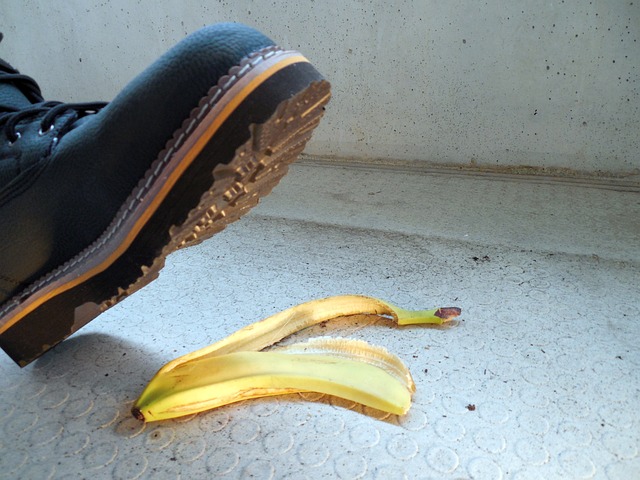Bicycle accidents frequently cause unseen yet significant soft tissue injuries like sprains, strains, and contusions, which can lead to chronic pain, reduced mobility, and long-term effects such as scar tissue and inflammation. Early comprehensive medical evaluation is crucial for effective management and return to normal activities. Specialized healthcare and legal counsel are essential for cyclists to receive fair compensation and appropriate care for bicycle accident injuries.
Bicycle accidents can cause more than broken bones. Soft tissue injuries, often overlooked, include sprains, strains, and contusions that may not show up on standard imaging tests. This hidden impact can lead to chronic pain and reduced mobility if left untreated. Understanding these injuries is crucial for cyclists and healthcare providers alike. This article delves into the common types of soft tissue bicycle accident injuries, their long-term effects, and effective management strategies to ensure proper care and a faster recovery.
- Understanding Soft Tissue Injuries: The Hidden Impact of Bicycle Accidents
- Common Types of Overlooked Soft Tissue Bicycle Accident Injuries
- Long-Term Effects and Management Strategies for Soft Tissue Injuries in Cyclists
Understanding Soft Tissue Injuries: The Hidden Impact of Bicycle Accidents

Bicycle accidents can cause a range of injuries, many of which are often overlooked due to their non-visible nature. Soft tissue injuries, encompassing muscles, ligaments, and tendons, are common yet complex. Unlike fractures or cuts, these injuries might not show up on initial scans, leading to underestimation of the harm. The subtle pain and reduced mobility they cause can significantly impact a person’s daily life, affecting work and leisure activities.
Understanding soft tissue injuries is crucial for both riders and medical professionals. These injuries may manifest as sprains, strains, or even chronic pain syndromes. Seeking prompt attention from healthcare providers specialized in these issues is essential. While a auto accident attorney or car accident lawyer might not directly address such injuries, they play a vital role by ensuring victims receive fair compensation to cover medical treatments and rehabilitation processes that can help manage these often-overlooked bicycle accident injuries.
Common Types of Overlooked Soft Tissue Bicycle Accident Injuries

In bicycle accidents, injuries to soft tissues—muscles, tendons, and ligaments—are frequently overlooked. While more visible injuries like broken bones often command immediate attention, soft tissue damage can be subtle but significantly impact a victim’s recovery and quality of life. Common types include muscle sprains, strains, and contusions, which may not initially seem severe but can lead to chronic pain and reduced mobility if left untreated. Even seemingly minor bumps or bruises could indicate underlying issues that require prompt medical attention.
Another often-overlooked aspect is the potential for long-term effects from soft tissue injuries. These can include scar tissue formation, reduced range of motion, and chronic inflammation. Individuals who experience these types of injuries in bicycle accidents may face challenges returning to their regular activities or even requiring ongoing physical therapy. This underscores the importance of comprehensive medical evaluation post-accident, especially when dealing with complex cases that might not immediately present as severe—a key consideration even if you’re considering a business litigation or caregiver abuse case, or need the expertise of a truck accident attorney.
Long-Term Effects and Management Strategies for Soft Tissue Injuries in Cyclists

Soft tissue injuries sustained in bicycle accidents can have long-lasting effects on cyclists’ lives. Unlike bone fractures that often heal with clear recovery milestones, soft tissue damages such as muscle strains, ligament sprains, and tendon tears may not show immediate resolution. Cyclists might continue to experience symptoms like persistent pain, reduced mobility, and sensitivity for months or even years after the initial accident. This can significantly impact their ability to participate in cycling activities, affecting both recreational and competitive pursuits.
Management strategies for these injuries involve a combination of rest, physical therapy, medication, and sometimes surgery. Early intervention is crucial to mitigate long-term consequences. Cyclists should consult with healthcare professionals specializing in sports medicine or physical rehabilitation to develop personalized recovery plans. Additionally, seeking legal counsel from an experienced auto accident lawyer can be beneficial if the bicycle accident was caused by another party’s negligence, ensuring cyclists receive fair compensation for their injuries and associated medical expenses. Unlike slip and fall cases or employment disputes, bicycle accident injuries require a unique understanding of cycling-specific damages and their lasting impacts.
Bicycle accidents can cause a range of soft tissue injuries that are often overlooked, leading to long-term pain and discomfort. By understanding the common types of these injuries and their potential impacts, cyclists and healthcare professionals can ensure better management and care. Recognizing and addressing these hidden injuries is crucial for promoting the well-being and swift recovery of cyclists, emphasizing the need for comprehensive knowledge in this area.






